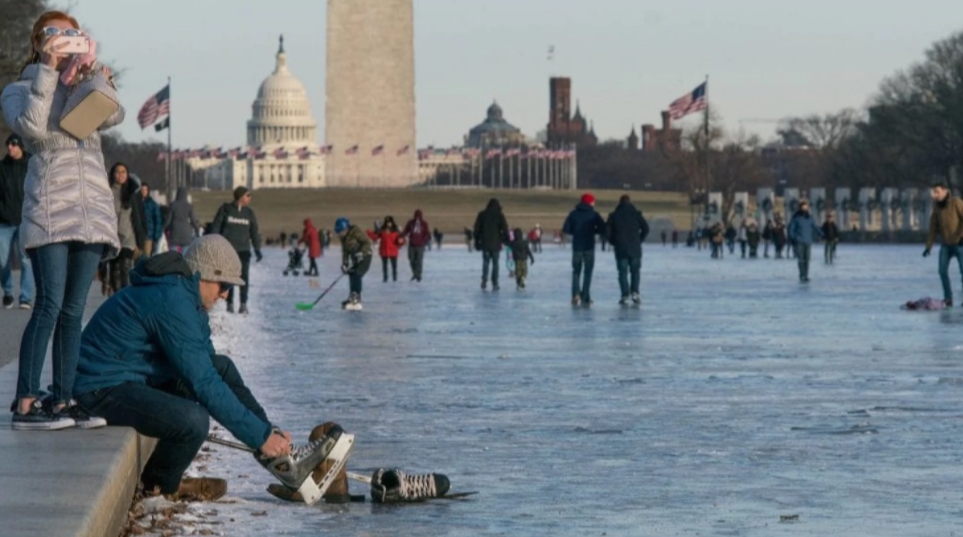
Winter Weather Advisory from 3 to 9 PM on Monday
BWI (1°) and Dulles (-1°) both broke their daily record low temperatures today in what could be the coldest morning of 2018. Many other locations also fell below zero or into the single digits in what the National Weather Service described as the “coldest morning for our region since February of 2015”. We’ve got some cold and tranquil weather to get through tonight before a mixed bag of precipitation creates some travel headaches for Monday evening.
Icy conditions are likely for the Monday evening commute
Through tonight: Clouds generally will be on the increase overnight. Otherwise, it’s another cold evening, though not as cold as the past few. Low temperatures will range from 13 to 18 degrees, with the highest readings confined to urban locations. Remaining dry with dew points at zero or in the single digits. Winds will be light out of the south at 5 mph.
Tomorrow (Monday): A complex forecast is shaping up for the latter part of the day. Mostly cloudy and dry for the first part of the day, with a light south wind attempting to force milder air in at the surface. Most locations will see afternoon temperatures peak somewhere between 31 and 35 degrees. Light precipitation (in the form of rain or sleet) will start to break out from west to east sometime after 3 p.m. There is a possibility of some freezing rain mixing in by the early evening, especially north and west of the city. Even in locations where the precipitation stays as rain or sleet, there is a high likelihood that it will freeze on contact given the cold pavement. Icy spots are likely for the evening commute. All precipitation should end by 10 p.m. and we are left with mostly cloudy skies and low temperatures ranging from 27 to 32 degrees.
Tomorrow’s tricky forecast
A forecast setup like tomorrow is what keeps meteorologists up at night. As weather folk, we have gotten pretty used to leaning heavily on models or guidance when creating forecasts. But in a scenario like tomorrow, models won’t be much help. The short answer as to why comes down a combination of the small-scale physical processes at work along with the surrounding environment. Follow me down the weather-nerd road for just a moment.
- It’s been cold. Really cold. And cold air is more dense than warm air. That means cold air becomes entrenched at the surface much more easily than warm air. And when you have a series of very cold days and nights in a row like we’ve had, that stubbornness to move becomes even more robust.
- The air temperature may not matter much come tomorrow night. We may see some places with temperature readings at or above the freezing mark, but still experiencing rain that freezes immediately on contact. That’s because the ground is frozen and our roadways lose “heat” much easier than the air around them. So the air temperature could be 35, but the road beneath it might be more like 30 degrees, which leads to instant black ice.
- The wetbulb effect. But essentially, when precipitation falls, it cools the air around it. This process is enhanced when precipitation falls into very dry air, accelerating the evaporation process and cooling the air even more. So when the rain or sleet or whatever starts falling tomorrow night, it may actually drag the air temperature down below the freezing mark.
All of this amounts to a complex forecast that contains minute details in which even our best forecast models have a hard time simulating. What’s worse, this has the potential to be a high-impact event, so the lack of certainty looms even larger. So make sure you keep an eye on the forecast as much as possible between now and tomorrow evening as things could change in a hurry.

